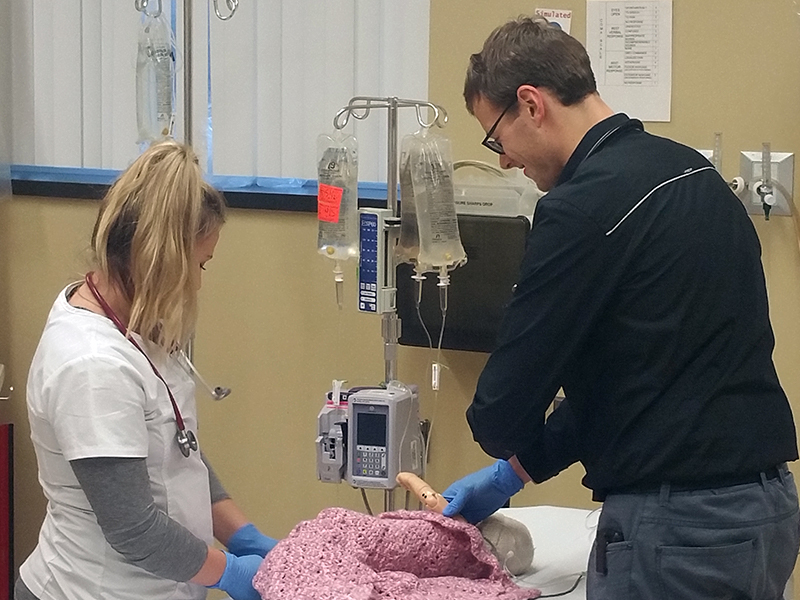
Future Health Care Professionals Learning From Each Other
The assumption is that all health care professionals work together on patient cases; however, this is not always the case.
What does nursing, medicine, social work, pharmacy and nutrition, physiotherapy and respiratory therapy all have in common? They all are health care professionals working together to provide the best patient care. The assumption is that all health care professionals work together on patient cases; however, this is not always the case. College of Nursing’s Kathy Rodger and Karen Juckes are trying to change this by bringing together students in all health science professions in Regina to learn together before they actually practice together – interprofessional collaboration at its finest!
Through the use of high fidelity simulation, think mannequins who breathe, cough and vomit, health science students are able to practice on “real patients”, working alongside not just fellow nursing students, but students from all health sciences. “Assistant Professor Karen Juckes and I have been involved in this work for the past few years and it is a remarkable aspect of the interprofessional collaboration fostered here at the College of Nursing Regina Campus,” said Rodger. “We facilitate a number of sessions throughout the year, ranging from pediatrics to surgical to a new “Code Blue” simulation, to give students the opportunity to take part in at least one collaborative simulation experience. The goal of the interprofessional simulation is to have students learn about one another’s roles, as they evolve during the exercise.”
There are a number of benefits of health science students practicing together before they actually work together, including learning how to communicate verbally and in writing with each other, to apply the principles of teamwork and group/team processes and ultimately, to use the knowledge of their own, as well as other’s roles appropriately to establish and achieve patient goals. Rodger explains how an interprofessional simulation experience is organized. “We use a variety of patient cases, making sure there are scenarios for all the participating health science professions, so students have the opportunity to practice their own approach and have others learn from their actions. The recent scenarios have involved a patient who has undergone an orthopedic surgical procedure and another patient who is being discharged from the hospital following a medical admission.”
Karen Juckes has been organizing the pediatric simulation, which involves students from nursing and medicine who are doing their pediatric clinical rotations. ”The scenarios include infants and children with common conditions, such as difficulty breathing or allergic reactions, whose condition is getting worse by the minute. A teaching pediatrician and pediatric clinical instructor facilitate the sessions and we have parents and grandparent actors who play a role in the scenario and also participate in the debrief afterwards to provide feedback to the students. The simulation experience allows students to become actively involved in situations where they tend to become observers in the real clinical setting.” When one of the participating medical students was asked about the experience, the student replied, “We get to work with real nursing students rather than having someone play the role of the nurse – it is much more realistic and fun!”
The newest simulation experience offered to students was “Code Blue”, which was piloted for the first time December 13th with fourth year nursing students, medical residents and respiratory students. “This simulation experience was created based on feedback from students,” said Juckes. “Students in these disciplines often reported that they feel anxious when involved in a Code Blue and that they would like to feel more comfortable in these situations upon graduation. We are very pleased with how the pilot simulation turned out and look forward to doing it again.”
Patients are often overwhelmed when accessing the medical system and unsure as to whom to speak to about each part of their care. Ideally, if all health care professionals understand each other’s roles, they will work together to provide quality care that is safe, effective, timely, efficient, equitable and most importantly, best for the patient. There is no better way to teach health professionals the value of one and another’s roles and to demonstrate to them how they can work together to provide the best possible care than teaching them as students before they ever enter their career as practicing health care professionals. Congratulations Kathy Rodger and Karen Juckes on creating these “real-life” collaborative simulation experiences for the health science students – you truly are changing the future culture of health care one student experience at a time.

